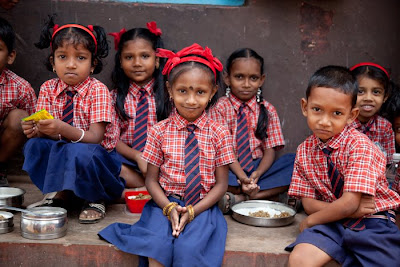Katrina and I have been in Rajasthan for roughly seven days. Usually, a week is long enough for me to get at least a basic sense of a place, but Rajasthan is a bit more difficult – at least for me.
Looking for the china shop, Udaipur
Different states in India seem almost like different countries to me, and coming from Kerala, Rajasthan is quite a change. Kerala is far South, Rajasthan is North. Kerala is comprised of steamy, tropical coast and cool, lush mountains. Rajasthan is Desert – the land of camels, colorful turbans, amazing mustaches, and nose-rings the size of padlocks.

Veiled beauty
People in Kerala are more outgoing, whereas in Rajasthan, people seem more aloof. I don’t want to make it sound like people in Rajasthan are unfriendly, rather, it seems harder to crack the surface of the cultural barrier. Once a crack forms, however, the goodwill can come as a flash flood.
One place I see this is in making portraits. Once I talk to a person and take their picture, all of the people nearby become animated and want me to take pictures of not only them, but of all of their friends too. For a photographer, it seems this should be a great thing, but I often wind up taking pictures more for them than for me. I find myself weighing whether it is worth taking a photo of one particularly appealing person, knowing that a photo-frenzy will ensue. However, the best example of a sudden rush of goodwill happened on our first evening in Jodhpur.
Jodhpur, near Sardar Market
We were photographing in the bazaar surrounding Jodhpur’s clock tower, when Katrina struck up a little friendship with three young women from a nearby village in the big city on a shopping expedition with their parents. As Katrina and I walked around the market, we kept bumping into the family -- so often that it became a bit comical.
Father and Daughters, Jodhpur
At one point, Katrina saw the family at stall selling cheap jewelry, so she went over to buy a bracelet there. The market woman started the haggling with a ridiculously inflated price, and the girls helped Katrina to find a reasonable (at least for a tourist) price. All this with no common language other than a calculator and hand gestures. As Katrina negotiated, a bit of a crowd gathered around. Finally, a price was agreed upon, Katrina handed over a bill, and the woman tried to under-change her. Katrina firmly, but coolly, told the woman to keep handing over the rest, and won the respect of the crowd with her market savvy; even one of the other shopkeepers commented to me, “Your wife is very intelligent.” After Katrina’s new friend helped her put the bracelet on, Katrina bought a second bracelet and gave it to her new friend.
Three daughters
When Katrina started putting the bracelet on her friend’s wrist, the surface cracked. The whole group that had been observing Katrina suddenly became very animated and pressed in, smiling and talking excitedly. The girl was overwhelmed and hardly knew how to react – neither did she know what to say, as she didn’t speak English. Finally, she led Katrina away by the hand, as she and her two sisters, all balancing heavy bags of goods on their head, walked back to the bus stop. After saying goodbyes, the family boarded the bus.
Heading Home
Katrina’s new friend took a window seat so that she could wave goodbye some more, and Katrina took a photo of her doing so. The bus sat for a few minutes, so Katrina went over to show her new friend the photo and the girl insisted that I take a picture of her leaning out of a bus window with her hand on Katrina’s shoulder. When the bus finally pulled away, the girl waved at us all the way down the block.
I think this little event is one that will be long remembered for a long time – on both sides. And it all stemmed a little good will and a 40-cent token of friendship. That is the kind of event that makes all of the hassles and discomforts of travel well worthwhile to me.
































